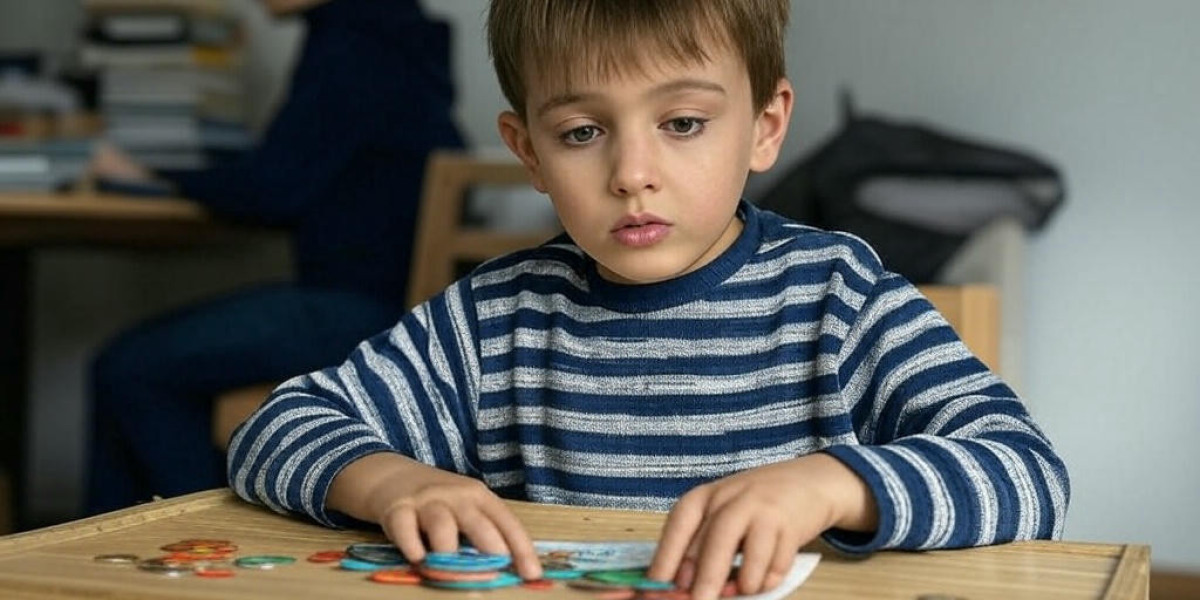G’day, mate. If you’re a parent in Australia, you’ve heard the chorus. It starts as a whisper in the Kmart toy aisle, grows to a demand in front of the iPad, and becomes a full-blown negotiation at the supermarket checkout. “Can I have…?”, “But I neeeeed…”, “It’s only ten bucks!” To our kids, money can often seem like a magical, abstract thing that flows endlessly from a plastic card we tap on a machine. The connection between the hard yakka we do all week and the V-Bucks they want for Fortnite can be very blurry indeed.
For generations, the answer was the humble piggy bank and some pocket money for doing the dishes. The weekly trip to the school tuck shop was the first real-world lesson in budgeting. But let's be honest, in 2025, that’s just not enough. Our kids are growing up in a world of digital wallets, one-click online purchases, buy-now-pay-later schemes popping up in their favourite stores, and relentless influencer marketing.
Teaching our kids financial literacy isn't just a nice idea anymore; it's an essential life skill, as critical as learning to swim or cross the road safely. This isn't about raising little stockbrokers; it's about raising capable, resilient, and responsible young adults who understand the value of a dollar and can make smart choices for their future. This is our guide to going beyond the tuck shop and giving our kids the real-world money lessons they so desperately need.
First Off, Why Bother? The Stakes Have Never Been Higher
It’s easy to think, "They're just kids, let them be kids." But the financial world isn't waiting for them to grow up. The habits they form now—how they think about earning, saving, and spending—will set the foundation for the rest of their lives. A 2023 report from the Financial Basics Foundation in Australia highlighted that a significant number of young people leave school with very little practical financial knowledge, making them vulnerable to debt and poor decision-making.
Think about it. We live in an increasingly cashless society where money is invisible. A kid doesn't see a physical note leave a wallet; they just see us tap a phone or a card. This abstraction makes it much harder for them to grasp the concept of finite resources. Add to this the rise of predatory 'buy now, pay later' services, which are now integrated into everything from fashion websites to food delivery apps. These services can be a debt trap for adults, let alone for teens who haven't been taught about interest, credit scores, or the danger of impulse spending.
This is precisely the knowledge gap that modern tools are designed to fill. Platforms like Flareschool, for instance, provide a safe, interactive space for kids to learn about these complex topics, turning abstract dangers into understandable, real-world lessons before they face them alone.
We're not just preparing them for a future of mortgages and superannuation; we're equipping them to navigate the complex financial landscape of right now. The goal is to demystify money, strip away the magic, and empower them with the confidence to be in control of their finances, not controlled by them. That’s a gift that will pay dividends for their entire life.
Pillar 1: Earning – The 'Hard Yakka' Principle
The first and most fundamental lesson is that money doesn’t grow on trees—it’s earned. This is where the concept of pocket money comes in, but we can make it so much more powerful than just a weekly handout.
It’s crucial to create a clear link between effort and reward. This could mean paying for specific chores that go above and beyond their normal family contributions (like washing the car or mowing the lawn, rather than just keeping their room tidy). This teaches the basic principle of exchanging labour for income.
But we can take it a step further and encourage an entrepreneurial mindset. Does your young grommet have a skill? Maybe they’re a whiz at making friendship bracelets, or they love baking. Help them set up a small "business." They could sell their wares to family and friends, or even run a stall at a local school fete. This teaches them so much more than chores. They learn about pricing, cost of goods (the flour and sugar aren't free!), marketing (making a cool sign), and customer service.
My neighbour’s 10-year-old started a weekend wheelie bin service for our street, charging two bucks a pop to take the bins out and bring them back in. He’s learning about recurring revenue, scheduling, and managing clients. It’s a brilliant, real-world lesson in what it takes to make a quid. The key is to show them that money is a direct result of the value they provide through their time, effort, and ideas.
Pillar 2: Saving – From Piggy Bank to Big Goals
Once they’re earning a bit of their own cash, the next vital lesson is learning not to spend it all immediately. The concept of delayed gratification is a superpower in our instant-everything world.
For younger kids, the clear piggy bank is still a cracker of an idea. Being able to physically see their coin collection grow is a powerful visual motivator. The next step is to help them set a tangible savings goal. It shouldn't be some vague concept like "saving for the future." It needs to be something they desperately want—a new LEGO set, a surfboard, tickets to a footy game. Help them work out the cost, print out a picture of it, and stick it on their piggy bank or a savings chart. This gives their saving a real purpose.
As they get older, this is the perfect time to introduce them to a real bank account. Most Aussie banks offer fee-free accounts for kids. This moves them from the physical to the digital world in a safe, controlled way. You can sit with them and check their balance online, showing them how deposits make the number go up. This is also your chance to introduce the magic of compound interest. You can explain it simply: "The bank pays you a tiny bit of money just for keeping your money with them. And then, you earn interest on your interest!" You can even create a "Bank of Mum and Dad" and offer a generous "interest rate" on their savings to make the concept more dramatic and exciting. This plants the seed for understanding how money can work for them.
Pillar 3: Spending – Needs vs. Wants in a Digital World
This is where the rubber hits the road. Teaching kids to be thoughtful spenders is arguably the most challenging—and most important—lesson. The core concept is differentiating between a "need" and a "want."
Start small and relatable. Give them a budget for the school book fair or let them be in charge of the snack budget at the supermarket. Give them $10 and let them figure out how to get the best bang for their buck. They’ll quickly learn about trade-offs and value. Do they want one big chocolate bar or three smaller things? These small-stakes decisions are invaluable practice.
In today’s world, the biggest challenge is online spending. The pressure to buy skins, upgrades, or extra lives in video games is immense. This is where you need to set clear boundaries. Instead of just saying no, help them budget for it. If they want to buy Robux, it has to come out of their pocket money or earnings. This forces them to make a choice: is that virtual hat worth two weeks of taking the bins out?
This is where modern tools can be a massive help. Digital platforms designed for kids can make these lessons interactive and fun. For example, the Australian-designed Flareschool program is brilliant for this, offering a safe and engaging way for kids to learn. It uses real-world scenarios and interactive modules that teach kids about things like budgeting for a holiday, understanding digital transactions, and recognising scams. It helps bridge the gap between a parent’s advice and the digital world a child actually lives in, making concepts like value and security feel relevant to them. Using a tool like this can supercharge their learning and give them a safe space to practise these skills.
Pillar 4: Giving – The Generosity Gene
A complete financial education isn't just about personal gain; it's also about understanding that money can be a tool to help others. Teaching kids about giving and charity fosters empathy and a sense of community.
Introduce a simple three-jar system for their earnings: one for SPENDING, one for SAVING, and one for GIVING. Even if it's just a small amount, the act of putting money into the "Giving" jar is a powerful habit.
Let them choose a cause they care about. Are they passionate about animals? They could donate to the RSPCA. Do they want to help the environment? They could contribute to a local conservation group. At the end of the year, you can help them make their donation. This shows them that they have the power to make a positive impact on the world, and it teaches them that financial wellbeing isn't just about what you have, but also about what you can give. It’s a lesson in citizenship as much as it is in finance.
Conclusion: Raising Capable, Confident Kids
Let's be clear: teaching our kids about money isn't a one-off conversation. It's a series of ongoing, age-appropriate lessons woven into the fabric of daily life. It’s the chat in the car about why we can’t buy a new toy every week. It’s celebrating with them when they finally save enough for that thing they really wanted. It’s guiding them when they make a spending mistake and feel the sting of buyer’s remorse.
By going beyond the tuck shop and embracing these real-world money lessons, we’re not just teaching them how to count their coins. We’re giving them the tools to build a future with less stress and more freedom. We’re raising a generation of financially capable, resilient, and generous Australians who are ready for whatever the world throws at them. And as a parent, there’s no better return on investment than that.
















